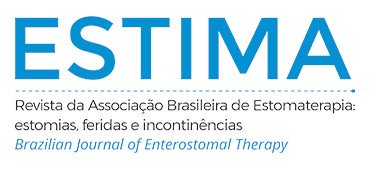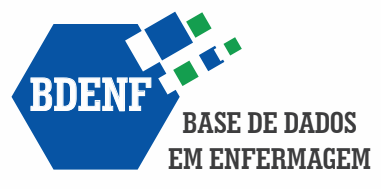Preparation of the Manuscript
The manuscripts must be original and unpublished and can be presented in Portuguese, English or Spanish. Manuscripts forwarded simultaneously to other journals or previously published will not be accepted. In 2018, the average time to evaluate the manuscripts until its final decision was 75 days and for publication it was 160 days. In this period 58% of manuscripts were rejected.
All communications and notifications will be made to the author, exclusively by the electronic system or by email. The identification of the authors must be made only in the submission system. Articles that show the names of the authors in the text body of the manuscript will not be accepted.
The following information must be submitted at the time of submission:
- full names of all authors,
- affiliation (institution of origin with 3 instances),
- email and
- ORCID. The registration to obtain the ORCID is free and can be done individually or by the institution, through the link: orcid.org.
- The name of the correspondence author must be specified and contain, in addition to the mandatory information, the full postal address.
Authors are those who make public their responsibilities for the content of the article, agreeing that the writing and intellectual contents were critically performed by all authors. Each author must approve the final version of the content to be published and agree to be responsible for all aspects of the work ensuring that questions regarding the accuracy or completeness of any part of the work are properly investigated and resolved. The Journal recommends up to 06 (six) authors per manuscript. When the number of authors is greater, justification must be sent to the editors.
To ensure the integrity of the blind peer review process, it is imperative to avoid the identities of the authors in the body of the text. Therefore, make sure that the following steps have been taken regarding the text and file properties:
- (1) exclude the name of the authors in the text;
- (2) do not include the section "Acknowledgments;
- (3) does not include the section "Authors’ Contribuition"; and
- (4) the identification of the author should also be removed from the properties of the file. At the editing stage of text, after approval of the manuscript, the corresponding author will be asked to fill in all this information.
The ESTIMA - Braz. J. Enterostomal Ther. endorses the CRediT (https://credit.niso.org/) taxonomy of contributor roles and encourages authors to use this taxonomy by providing an Authors’ Contribution section for their manuscripts. After approval of the article, the publication of the journal will request the identification of each author's contribution. Therefore, at the time of submission only one document containing:
a) Title: must be in Portuguese, English and Spanish and without abbreviations. The title should be concise and explanatory and represent the content of the work. It must contain a maximum of 15 words with 1.5 line spacing. Items not allowed: acronyms, abbreviations and geographical location of the search.
b) Summary: must be structured and contain objectives, method, results, and conclusion, written in a single paragraph, in up to 200 words. Their translations must be presented in English (abstract) and Spanish (abstract). If the manuscript is originally written in Spanish, it should contain the translations into Portuguese and English; and when originally written in English, must contain the translations into Portuguese and Spanish.
c) Descriptors: must include 3 to 6 descriptors, separated by periods, also presented in Portuguese, English and Spanish respectively after the Resumo, Abstract and Resumen. The descriptors should be in accordance with the Health Sciences Descriptors (Descritores em Ciências de Saúde - DECs) or MeSH (Medical Subject Headings) and should be consulted, respectively, on the websites http://decs.bvs.br/ and http://www.nlm.nih.gov/mesh/. It is recommended to use the keyword stomatherapy in all the articles submitted, aiming its future insertion as a descriptor.
d) Structured text in the following sequence: Introduction, Objective, Methods, Results, Discussion (containing limitations and recommendations), Conclusion and References. Attachments will only be accepted when necessary and indispensable for the study. The manuscript should be presented shortly after the abstracts and descriptors, in Microsoft Word 2003 or newer format with .doc or .docx extension, Times New Roman font size 12, justified, 1.5 line spacing throughout the text and no pagination or page or section breaks throughout the file.
e) Figures and tables: A maximum of five tables or figures shall be allowed to be inserted in the body of the text, once they have been mentioned for the first time. The internal fonts of the illustrations should be of Times New Roman type 10 with single spacing.
The elaboration of the tables should follow the "Tabular Presentation Rules" established by the National Statistical Council and published by IBGE (1993). When the table is extracted from another work, the original source should be mentioned just below it. In this case, authorization must be sought from the authors. The title of the table and figure should contain relevant and necessary minimum information, including location and year of data collection.
The illustrations should be presented centrally and without retreat, not exceeding the size of a sheet. No photos or figures from other studies will be accepted without the permission of the original authors. When there are photographs, they should be in resolution above 300dpi. Link to IBGE standards: http://biblioteca.ibge.gov.br/visualizacao/livros/liv23907.pdf
f) Financing: this should be mentioned at the end of the text, in case the study has received support from development agencies or companies. By virtue of the CAPES n. 206 ordinance of September 4, 2018, which provides for the obligatory citation of CAPES, all authors are requested to inform the receipt of partial or full assistance to the research in all submitted manuscripts. The process number of the aid received (grant) must be informed.
g) References: Citations and references must be prepared in accordance with the Vancouver standards (https://www.nlm.nih.gov/bsd/uniform_requirements.html). Each manuscript can contain a maximum of 25 references, of which 75% are articles published in recent periodicals, in the last five years. For review articles, there is no restriction on the number of references.
Articles published in more than one language must be referenced in ENGLISH. The article's DOI and/or access link must be inserted at the end of all references cited in the manuscript. Reference links must be publicly active.
Dissertations, theses, books, official documents, abstracts in annals of events and Internet links are considered texts of gray literature and their citation should be restricted to a maximum of three citations per article. The accuracy of the information in the references is the responsibility of the authors.
Examples of most common references:
Books:
Tyrrell MAR. Programas Nacionais de Saúde Materno-infantil: impacto político-social e inserção da enfermagem. Rio de Janeiro: EEAN/ UFRJ; 1995.
Book with edition:
Souza EDF. Novo manual de enfermagem. 5ª ed. Rio de Janeiro: Bruno Buccini; 1972.
Institutional work:
Ministério da Saúde (BR). Dengue: instruções para pessoal de combate ao vetor: manual de normas técnicas. 3ª ed. Brasília (DF): Ministério da Saúde; 2001.
Book Chapter:
Pinto MCI, Porto IS. A dor como quinto sinal vital. In: Figueiredo NMA, organizador. Ensinando a cuidar de clientes em situações clínicas e cirúrgicas. São Caetano do Sul (SP): Difusão Paulista de Enfermagem; 2003. p.59-78.
Book published by organizer, editor or compiler:
Loyola CMD, Oliveira RMP, organizadores. Indícios marginais. Rio de Janeiro: EEAN/UFRJ; 2003.
Scientific paper published in journals (abbreviate the titles according to Medline. Contult the website: http://www.ncbi.nlm.nih.goventrezquery.fcgi?=journals). For up to 6 authors cite all. Above 6, use et al.
Halpern SD, Ubel PA, Caplan AL. Solid-organ transplantation in HIV-infected patients. N Engl J Med 2002 Jul;347(4):284-7.
Lakka HM, Laaksonen DE, Lakka TA, Niskanem LK, Kumpusalo E, Tuomilehto J et al. The metabolic syndrome and total cardiovascular disease mortality in middle-aged men. JAMA 2002;288:2709-716.
Cabral IEC. Cuidando y educando para la cidadanía: modelo sociopolítico. Freire Online. Journal of the Paulo Freire Institute/UCLA [periódico na internet]. 2003 jul; [citado 2003 set 10]; 1(2):[aprox.3 telas]. Disponível em: http://paulofreireinstitute.org/freireonline/volume1/1cabral2.htm
Work presented at a scientific event and published in proceedings:
Magalhães MEC, Pozzan R, Brandão AA, Cerqueira RCO, Roussoulières ALS, Szwarcwald C, et al. Early blood pressure level as a mark of familial aggregation for metabolic cardiovascular risk factors. Annual Meeting of the World Congress of Cardiology; 1998 Apr 26-30. Proceedings. Rio de Janeiro, 1998. J Am Coll Cardiol 1998;31(5 Suppl C):408C
Teixeira MLO, Sauthier J. Orientação para o autocuidado de clientes cirúrgicos: um estudo fundamentado na relação dialógico-educadora de Paulo Freire. Resumos dos trabalhos apresentados no 52º Congresso Brasileiro de Enfermagem; 2000 out. 21-26; Recife-Olinda (PE), Brasil. Recife (PE): ABEn; 2000. p. 13.
Dissertation and thesis:
Souza IEO. O desvelar do ser-gestante diante da possibilidade de amamentação [tese]. Rio de Janeiro (RJ): Escola de Enfermagem Anna Nery, Universidade Federal do Rio de Janeiro; 1993.
Technical and scientific report:
Associação Brasileira de Enfermagem, Seção Rio de Janeiro. Relatório Financeiro 2000. Rio de Janeiro: ABEn (RJ); 2000. N° 2014-0139-2824.
Legal document:
Lei n. 7.498 de 25 de junho de 1986 (BR). Dispõe sobre a regulamentação do exercício da enfermagem e dá outras providências. Diário Oficial da União [periódico na internet], Brasília (DF). 26 jun 1986 [citado 4 jul 2008]. Disponível em http://www.planalto.gov.br/ccivil_03/leis/l7498.htm
Text presentation guides
The ESTIMA - Braz. J. Enterostomal Ther. recommends the use of guides from the Equator Network for the preparation and submission of manuscripts, according to the type of study:
Randomized clinical trial: CONSORT.
Systematic reviews and meta-analysis: PRISMA.
Revisions of type Scoping Review: PRISMA SR.
Observational studies in epidemiology: STROBE.
Qualitative studies: COREQ.
Case study: CARE.
Implementation research, innovation, prospecting and/or technological development: SQUIRE 2.0.
Documents for submission
- Manuscript without identification of authors
- Title page
(Download)
- Open Science
(Download) - Conflict of interest
(Download) - Declaration of authorship
(Download) - Ethics Committee Opinion / Clinical Trials Registration Protocol
Translation/version
All articles will be published in Portuguese and English or Spanish and English.
After acceptance for publication, authors will be asked to provide a complete translation of the manuscript. The choice and contact with the translation company are the sole responsibility of the authors. The translated manuscript must be sent to the Editors together with the translation certificate issued by the responsible company. It is important to highlight that reviewing the translated manuscript is the sole responsibility of the authors.
Fees for Authors
The Estima - Brazilian Journal of Enterostomal Therapy does not charge submission, evaluation or processing fees for new manuscripts. After approval of the manuscript, in the editing stage, the authors will be notified by the editorial team to pay the publication fee (article processing charge, APC), which must be carried out and proven in the same way. The Publication Fee is R$500.00 brazilian real (BRL), which must be paid upon acceptance of the manuscript for publication.
The costs of translating the manuscript into English and/or Portuguese, with companies recommended by the Brazilian Journal of Enterostomal Therapy – Revista Estima, are the responsibility of the authors.

























